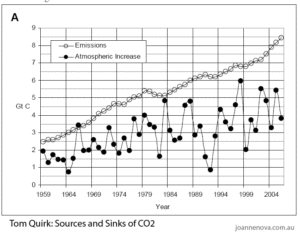by University of Nebraska-Lincoln, Feb 22, 2023 in ScienceDaily
Geologists doing fieldwork in southeastern Utah’s Cedar Mountain Formation found carbon isotope evidence that the site, though on land, experienced the same early Cretaceous carbon-cycle change recorded in marine sedimentary rocks in Europe. This ancient carbon-cycle phenomenon, known as the ‘Weissert Event’ was driven by large, sustained volcanic eruptions in the Southern Hemisphere that greatly increased carbon dioxide levels in the atmosphere and produced significant greenhouse climate effects over a prolonged time.
Scientific research in recent decades has confirmed that major changes in the global carbon cycle caused significant changes in the Earth’s atmosphere and oceans 135 million years ago, during the early Cretaceous Period. A range of questions remain about the details of climate change dynamics in that era. This new research, involving wide-ranging chemical and radioactivity-based analyses of rock strata in Utah’s Cedar Mountain Formation, helps fill in that knowledge gap by confirming that such carbon-cycle shifts were recorded on land in ancient North America.
The carbon cycle is one of Earth’s fundamental environmental phenomena, involving the ongoing transfer of carbon among the atmosphere, oceans and living organisms, as well as soils, sediments and rocks in the solid Earth. The cycle is crucial to biological processes for living things on land and sea. When large-scale changes in the cycle occur, they can produce major shifts in climate and the oceans’ biological conditions.
“We’re studying how the global carbon cycle has functioned in the past, how changes are recorded in the sedimentary rocks around the world,” said Joeckel, a professor in the School of Natural Resources at Nebraska. The environmental phenomena he and his colleagues analyzed “are exactly the kind of things we’re talking about today, as people increase the input of carbon dioxide into the atmosphere at a much-accelerated rate by burning fossil fuels.”
Joeckel, the Nebraska state geologist, headed the Utah fieldwork and organized the study, published as a peer-reviewed paper in a special February issue of the journal Geosciences.
…


